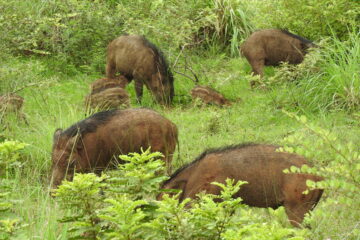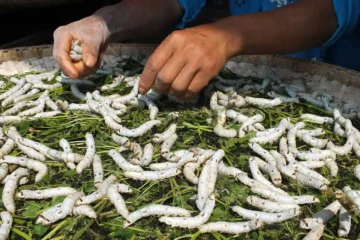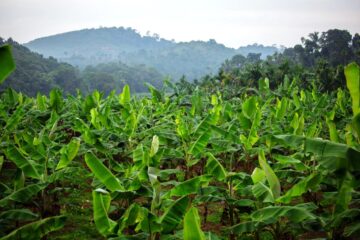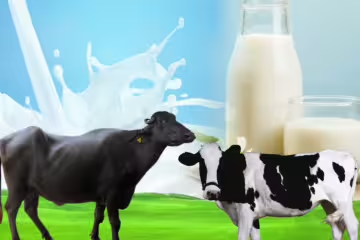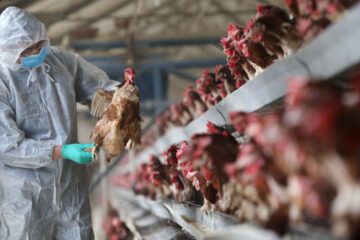Published in: December 2017
Wearing silk enhances one’s appearance, and silk clothing has a revered status in our culture. An old saying suggests that silk, even when torn, retains its prestige. Silk garments also provide a cooling effect on the body. The luxurious silk fabric is obtained through silkworms, and here is an exploration of the fascinating life cycle of these creatures.
The practice of rearing silkworms is known as sericulture. Pure silk is derived from Lepidoptera insects, specifically silkworms. As silkworm rearing requires constant human care over many days, these insects cannot survive without it.
Silkworms have limited flying ability, and silkworm larvae cannot search for food on their own, so food must be provided nearby. The Bombyx mori species is the primary source of commercial silk production.
Classification of the Silkworm in the Animal Kingdom
- Phylum: Arthropoda
- Class: Insecta
- Subclass: Pterygota
- Division: Endopterygota
- Order: Lepidoptera
- Genus: Bombyx
- Species: mori
Types of Silkworms
There are six types of silkworms: the Chinese or Mulberry Silkworm, Muga Silkworm, Tussar Silkworm, Oak Silkworm, Giant Silkworm, and Eri Silkworm.
Physical Appearance of the Silkworm
Silkworms are around 25 mm long, with wings spanning 40-50 mm. Their entire body is covered in scales. Female silkworms are slightly larger due to the many eggs they carry, which makes flying difficult.
Life Cycle
Silkworms have distinct male and female forms, and mating occurs between them. However, their development involves a complex metamorphosis through various stages.
- Eggs
After fertilization, each female moth lays clusters of 300-500 eggs on mulberry leaves, covering them with a gelatinous substance. These small, soft, spherical eggs change color from yellowish-white to a darker shade over time. The moth dies within 4-5 days after laying eggs, without eating. - Silkworm Larvae
The larvae hatch from the eggs and measure about 6 mm. They have a segmented body with 12 segments, covered in white or gray skin. These larvae consume mulberry leaves rapidly and grow quickly, molting four times during their development. They reach maturity in about 45 days, growing up to 8 cm in length. By this stage, silk-secreting glands develop on their sides. Silk consists of five threads, bound together by a protein called sericin. - Cocoon Stage
At this point, the larvae stop eating and move to the edges of mulberry leaves. They begin secreting a sticky fluid from their silk glands through tiny openings. This fluid hardens when exposed to air, forming long, tough silk threads. The larva spins the silk around itself, creating a cocoon. This process takes 3-4 days, resulting in a dense, egg-shaped cocoon in white or yellow. A single silkworm can produce 1,000-1,500 meters of silk thread. - Imago (Adult Moth)
Inside the cocoon, the pupa undergoes metamorphosis and eventually emerges as a moth (imago) by secreting an alkaline fluid that softens the cocoon’s tip. The moth then emerges to mate and lay eggs, completing the cycle before it dies.
Silkworm Rearing
Silkworm rearing requires materials like bamboo trays, knives for cutting leaves, and equipment for separating larvae. An ideal environment has temperatures between 25-30°C and humidity between 70-80%. The fertilized female is placed in net-covered cardboard trays to lay eggs.
Spread rice bran on bamboo trays and place the larvae on it. Feed the larvae with small mulberry leaf pieces five times daily. From the fourth day, entire leaves can be provided.
The amount of leaves consumed by the larvae increases with age. Once mature and ready to spin cocoons, the larvae are transferred to bamboo trays called chandrikas.
The pupa inside the cocoon is enveloped by a single silk thread secreted from the larva’s glands. Before the moth emerges, the pupae are killed using steam, hot air, or fumigation, a process called “stifling.” The cocoons are then dried, and the silk threads are spun into yarn.
Note
The Central Sericultural Research Station was established in 1943 in Berhampore, West Bengal. Later, in 1947, the Indian government created the Central Silk Board to promote the silk industry.
Dr. M. C. Nalinashundari, Assistant Professor, M. D. Kauri, Research Scholar, Zoology Department, Queen Mary’s College, Chennai – 600 004.



